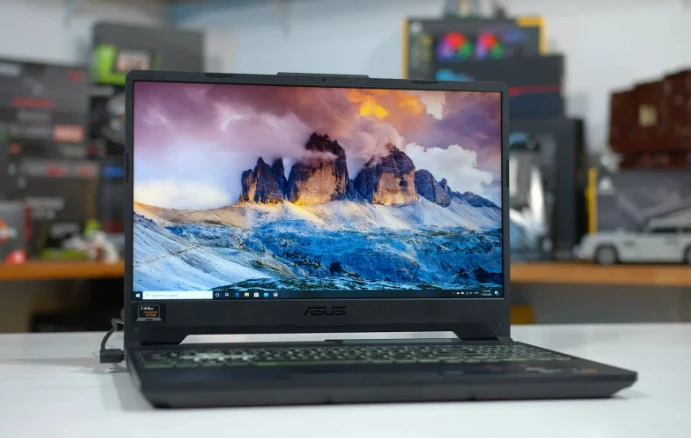Your premium-class gaming laptop may never quite match the performance of a gaming laptop with a similar price tag. However, that doesn’t mean you can’t enjoy the latest games. Instead, it places additional pressure on you to ensure that your laptop is optimized for gaming.
Unlike desktop computers, where hardware upgrades are a breeze, laptop users are likely limited to upgrading only the memory (and possibly the hard drive). So, how can you enhance your laptop’s gaming performance?
Minimum RAM Requirements for Gaming
Formally, since 2017, some games have required a minimum of 16GB of RAM. Requirements haven’t changed significantly since then; if anything, they’ve increased. However, not everyone uses laptops for gaming. Many need a laptop for movie watching, internet surfing, music, or working with text documents. For such purposes, 8-12GB will suffice. You can even run some older games with this amount.
Considering RAM options, below 8GB might be suitable if you need a budget office laptop running Windows 7. For reference, Windows 11 has a minimum RAM requirement of 6GB, but this is critically low, as various programs, applications, and games will also be running.
Update Laptop Drivers for Smooth Gaming
Almost all computers running Windows, macOS, and Linux operate on the same hardware with identical architecture. This means that regardless of the operating system, it’s crucial to keep device drivers up to date.
Fortunately, this is usually simple, and at worst, a minor inconvenience offset by standard OS updates.
Ensure that the software for managing the graphics processor (e.g., Nvidia GeForce or AMD Radeon) is set to update automatically. Don’t forget to update the controller and audio drivers to the latest versions.
Install the Latest Version of DirectX
DirectX is a set of tools that streamline graphics in video games. It’s vital for gaming on Windows. Over the years, various versions of DirectX have been released.
Launched in 2015, DirectX 12is the latest version preinstalled on laptops with Windows 10.
To check your current DirectX version, press Win + R to open the Run menu, type dxdiag, and wait for the DirectX Diagnostic Tool (DXDiag) to load. On the Display tab, you’ll find information about your dedicated video card. In the Drivers panel, look for the Direct3D DDI field, numbered according to the latest DirectX version.
In addition to updating graphics drivers, ensure that your audio drivers are suitable for gaming. You can check your audio driver status on the Sound tab in DXDiag. Also, note that this tab provides a summary of input device driver information.
DXDiag is a good way to confirm if all drivers are installed on your gaming hardware. If in doubt, run the Windows Update Center or manually update device drivers.
Boost Your Laptop’s Graphics Card Performance
While slightly daring for beginners, overclocking offers an opportunity to squeeze additional performance out of your laptop’s graphics card. Tools are available for both AMD (https://www.amd.com/en/technologies/radeon-boost) and Nvidia GPUs, making the process relatively hassle-free.
The primary challenges involve managing power supply and heat dissipation. Overclocking increases power consumption, necessitating proper adjustment of your laptop’s power settings. It also raises the temperature of the graphics processor.
Typically, a laptop’s built-in cooling system handles this, but you must regularly clean radiators and fans, as mentioned in step 1. Failure to do so may result in your laptop automatically shutting down as a protective measure when it becomes too hot.
If you’re searching for a GPU overclocking tool, the current favorite is MSI Afterburner, compatible with both Nvidia and AMD graphics cards.
Optimize Your Laptop’s Power Settings
Effective power management is crucial for enhancing the performance of devices, especially laptops designed for use away from a constant power source. While Windows provides several power management options, connecting your laptop to an outlet is essential for robust gaming performance.
Once done, it’s time to examine your computer’s power settings. In Windows 10, navigate to Settings → System → Power & sleep → Additional power settings, and select High Performance. Also, click Change plan settings → Change advanced power settings to ensure you haven’t configured anything here. You wouldn’t want power settings compromising your laptop’s gaming performance.
Activate Gaming Mode on Windows 10 and 11
This is a tip that anyone can use. Windows 10 and 11 comes equipped with the Xbox app, offering features like screen recording, streaming, and a gaming mode. Optimizing your laptop for gaming can be as simple as activating the gaming mode.
Press Win + G to display the Xbox panel. When prompted, check Yes, this is a game.
On the gaming panel, find the gaming mode button and click to enable it. Once activated, it ensures that the OS launches games with optimal settings, closing or pausing some background tasks for better performance.
Close Background Applications
Before hitting “Play,” make sure all other applications are closed. Once done, check the taskbar. In this Windows taskbar section, you’ll find icons for applications running in the background. Right-click each icon and select Exit or a similar option. Of course, you can leave open applications related to GPU management or voice chat tools!
Everything that should be running on the taskbar before launching a game is your digital game download service… or nothing at all.
Online Gamers: Check Network Speed
Your laptop’s gaming performance is determined by its hardware, drivers, and system settings. However, if you’re into online gaming, there’s another element to consider: your Internet connection speed.
Lags are a common cause of issues with online games. It could be due to problems with your Internet connection, but often, the culprit is a slow connection between your laptop and the router. In most cases, your wireless network card will have the latest driver versions, thanks to Windows Update or other OS updates.
If there are no improvements after applying updates, consider connecting to the router via a wired Ethernet connection. You should also check if your gaming router can optimize gaming performance.

